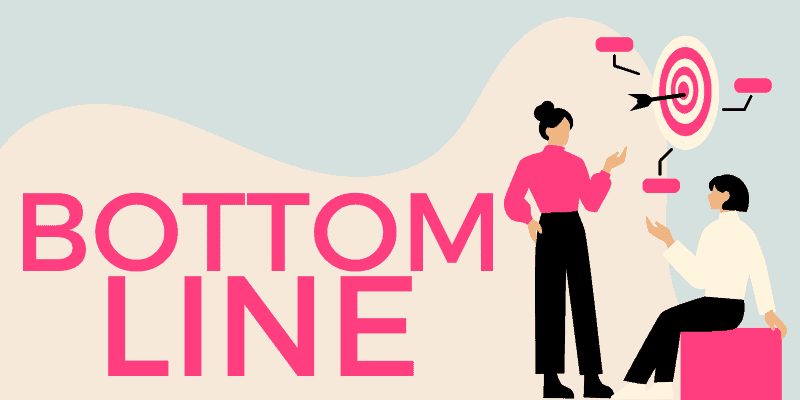In life, we all have to make decisions. Whether it’s choosing what to wear, what to eat, or even what job to take, decisions are everywhere. Sometimes, we might feel confused or overwhelmed by the choices we face. That’s where understanding “the bottom line” comes into play. The bottom line is like the main point or the most important part of something. In this article, we’ll explore how to simplify decision-making by focusing on the bottom line.
What Does “The Bottom Line” Mean?
When people talk about “the bottom line,” they often mean the final outcome or the essential truth of a situation. It’s like when you read a story, and you want to know what happens at the end. Instead of getting lost in all the details, you just want the main idea. In business, the bottom line usually refers to profit or loss, but it can apply to everyday choices as well. By understanding the bottom line, you can make decisions more easily.
Why Is Understanding the Bottom Line Important?
Knowing the bottom line can help in many areas of life. For instance, when you’re trying to decide what snack to have, it helps to think about what is healthy or not. If you focus on the bottom line—choosing something nutritious—you make a better choice. This idea applies to everything from spending money to planning a vacation. By concentrating on what truly matters, you save time and energy and feel more confident in your choices.
How to Find the Bottom Line in Your Decisions
Finding the bottom line in a decision isn’t always easy. Here are some steps to help you figure it out:
- Identify Your Options: Start by writing down all the choices you have. For example, if you’re choosing a new video game, list all the games you’re considering.
- Gather Information: Once you have your options, learn about each one. Check reviews, watch videos, or ask friends what they think. The more you know, the better your decision will be.
- Consider the Outcomes: Think about what will happen if you choose each option. Will you be happy? Will it help you reach your goals? This step is crucial in understanding the bottom line.
- Weigh the Pros and Cons: Make a simple list of the good and bad points for each choice. This way, you can see which option has more positives. The one with the best pros compared to its cons is often the bottom line.
- Make Your Decision: After analyzing your options, it’s time to choose. Trust your judgment and go with the option that aligns best with your goals and values.
- Reflect on Your Decision: Once you’ve made your choice, take a moment to think about it. Did you make the right call? If things didn’t turn out as you expected, that’s okay! Every decision is a learning opportunity.
Real-Life Examples of Finding the Bottom Line
Let’s look at a few real-life situations where understanding the bottom line is essential:
Example 1: Choosing a Family Dinner
Imagine it’s dinner time, and your family can’t decide what to eat. You have several options: pizza, pasta, or sushi. To find the bottom line, you could think about everyone’s preferences, dietary needs, and budget.
- Pizza: Everyone likes it, but it’s not very healthy.
- Pasta: A good middle ground, but some family members might not enjoy it.
- Sushi: It’s healthy and everyone loves it, but it can be pricey.
In this case, the bottom line might be to order sushi because it pleases everyone and is healthier.
Example 2: Choosing a School Project
Now, let’s say you have to pick a topic for a school project. You could choose between science, history, or art. To find the bottom line, consider:
- Science: Fun experiments but might be hard to understand.
- History: Lots of information but not very exciting.
- Art: Creative and enjoyable, but you might not learn much.
The bottom line here could be to choose the art project. It’s enjoyable, and you can learn new skills while having fun.
Example 3: Buying a New Toy
Suppose you want a new toy but can’t decide between a robot or a puzzle. You think about:
- Robot: It’s exciting and fun but requires batteries.
- Puzzle: Engaging and good for brain development but may not be as thrilling.
In this case, the bottom line might be to go for the robot, as it offers excitement and play value, even though it has extra maintenance.
The Bottom Line in Financial Decisions
Understanding the bottom line is especially important when it comes to money. Here are some tips for making financial decisions:
Budgeting Wisely
Creating a budget is a great way to manage your money. The bottom line of budgeting is knowing how much money you have and how much you can spend. Here’s how you can do it:
- List Your Income: Write down all the money you receive monthly.
- List Your Expenses: Include everything you spend money on, like rent, food, and fun activities.
- Subtract Expenses from Income: This helps you see how much money you have left.
If your expenses are more than your income, it’s time to rethink your spending habits. Focus on the bottom line: saving more and spending less.
Making Smart Purchases
When you want to buy something expensive, like a new phone or a bicycle, finding the bottom line can help. Ask yourself:
- Do I really need it?
- Can I afford it?
- What are the long-term benefits?
By answering these questions, you can make a smarter purchase. Sometimes, it’s better to wait and save money for something that truly matters to you.
The Bottom Line in Relationships
The idea of the bottom line isn’t just for decisions about money or food; it also applies to relationships. Here’s how you can find the bottom line in your friendships and family connections:
Communicating Openly
Good communication is key to any relationship. If you’re feeling upset with a friend, talk to them about it. The bottom line is to express your feelings honestly. When you share what’s bothering you, you can work together to find a solution. This strengthens your relationship.
Understanding Each Other’s Needs
Every person has different needs in a relationship. The bottom line is to recognize and respect these needs. For example, if a friend values quality time, make an effort to spend more time with them. When both people understand each other’s needs, the relationship grows stronger.
The Bottom Line in Health Choices
When it comes to health, focusing on the bottom line can guide you to make better choices. Here are some tips for keeping your health in check:
Eating Healthy
Choosing what to eat can be tough with so many options available. The bottom line for healthy eating is to focus on whole foods. Fruits, vegetables, and whole grains provide essential nutrients. Instead of processed snacks, opt for fresh fruits or nuts. This simple change can improve your health significantly.
Staying Active
Exercise is crucial for good health. The bottom line is to find activities you enjoy. Whether it’s dancing, swimming, or playing sports, being active should be fun! When you love what you’re doing, you’re more likely to stick with it.
Learning from Mistakes
Mistakes are a natural part of life, and they can help us learn valuable lessons. When you make a poor decision, take a moment to reflect. The bottom line is to understand what went wrong and how you can avoid making the same mistake in the future. This growth helps you become a wiser decision-maker.
The Bottom Line on Life Choices
Life is full of choices, both big and small. Whether you’re deciding where to go on vacation or what to study in school, keeping the bottom line in mind helps you stay focused on what’s important. By simplifying your decision-making process, you can lead a more fulfilling life.
Embracing Change
Life is ever-changing, and sometimes, we need to adjust our choices accordingly. The bottom line here is to be flexible. When unexpected situations arise, be willing to change your plans. Adapting to change can lead to new opportunities and experiences.
Finding Balance
In everything you do, finding balance is essential. The bottom line is that too much of anything can be harmful. Whether it’s work, play, or screen time, maintaining balance helps you live a healthier and happier life.
Conclusion
In summary, the bottom line is a powerful tool for making decisions. By understanding what truly matters in any situation, you can simplify your choices and feel more confident about your decisions. Whether it’s about money, relationships, health, or daily life, focusing on the bottom line helps you navigate through life’s complexities. So, the next time you find yourself faced with a choice, remember to look for the bottom line. It could make all the difference!






